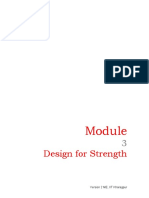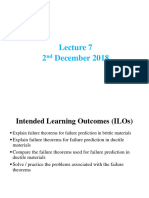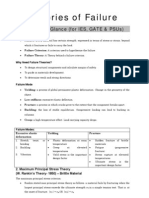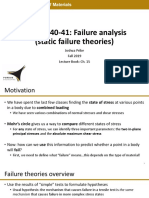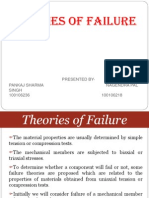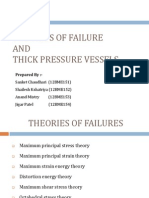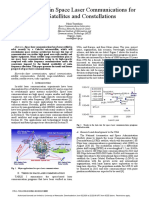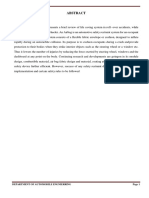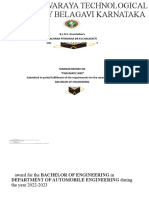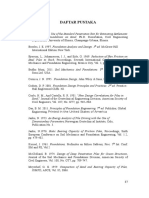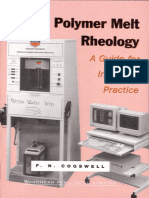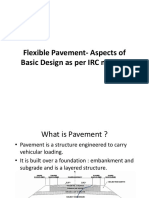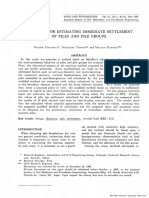0% found this document useful (0 votes)
81 views13 pagesMOM Mod5@AzDOCUMENTS - in
This document discusses theories of failure in mechanical design. It introduces various stress-strain relationships in materials and two main types of failure: yielding and fracture. It emphasizes using a factor of safety in design to avoid failure under working loads. Four common theories of failure are described: maximum principal stress, maximum principal strain, maximum shear stress, and maximum strain energy. Examples of applying these theories to problems are provided. The goal is to aid mechanical designers in predicting failure modes and employing appropriate design methodologies.
Uploaded by
Mahadev MetriCopyright
© © All Rights Reserved
We take content rights seriously. If you suspect this is your content, claim it here.
Available Formats
Download as PDF, TXT or read online on Scribd
0% found this document useful (0 votes)
81 views13 pagesMOM Mod5@AzDOCUMENTS - in
This document discusses theories of failure in mechanical design. It introduces various stress-strain relationships in materials and two main types of failure: yielding and fracture. It emphasizes using a factor of safety in design to avoid failure under working loads. Four common theories of failure are described: maximum principal stress, maximum principal strain, maximum shear stress, and maximum strain energy. Examples of applying these theories to problems are provided. The goal is to aid mechanical designers in predicting failure modes and employing appropriate design methodologies.
Uploaded by
Mahadev MetriCopyright
© © All Rights Reserved
We take content rights seriously. If you suspect this is your content, claim it here.
Available Formats
Download as PDF, TXT or read online on Scribd
/ 13











